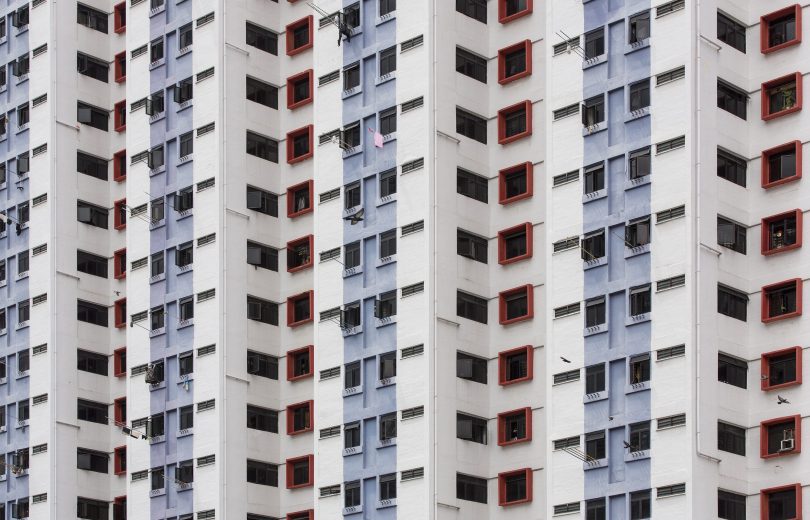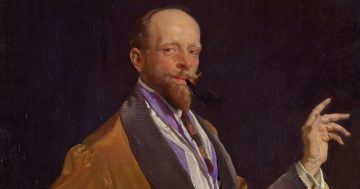
Skull House, from the Drum Detroit series, 2011 – 13. Photo: Tina Havelock Stevens.
There’s no place like home, the saying goes. Home Sweet Home. Home is where the heart is. The idea of home is deeply embedded in us all as humans, and it’s at the centre of a beautiful new exhibition at the Canberra Museum and Gallery, Habitat: Ways of Living.
Curated over a three-year period by Mark Bayly, the exhibition asks what home means to us all and how those meanings differ. Photographs of greenfield sites in Canberra contrast with urban decay in East Germany and abandoned housing in Detroit.

Singapore Apartments, photographed in 2019. Photo: David Paterson.
Embedded throughout the exhibition are individual stories of resilience, imagination, the human spirit and the universal desire to make a space that is your own.
The ACT’s historic houses, like Calthorpe’s, were one of his inspirations.
“Most Canberrans are middle class; this is a very prosperous place,” Mark says. “You can take things for granted when you come from prosperity and only later begin to question the things you take for granted when you’re a child about home and security and what makes that.
“I’m asking Canberrans to ask themselves what home means. What it is to have a roof over your head.”

Fire at Little Bombay. Photo: Sean Davey.
Among the photos are stunning images from the Black Summer fires taken by Sean Davey at Little Bombay as the blaze took hold. The destruction of Northbourne Flats is recorded with all their layers of local lived history.
Many of the artists in this show are locally based, or Canberra trained, but the subject matter is international. There’s a video installation by Michal Glikson, an ANU School of Art graduate who befriended a family on the streets of Lahore, a bustling Pakistani city of more than 12 million people.
“They erect a structure on the streets every evening and take it down at dawn,” Mark says. “The video is incredibly poignant as it shows that process but also shows the mother making a fire to cook breakfast for her children with a real sense of joy and shelter.
“That fireplace scene contrasts with Sean Davey’s images of the fire. Neither Sean nor I wanted to select images that would re-traumatise visitors. His images of Cobargo in the aftermath were too hard to see – but these photos from Little Bombay are more abstract in their depiction of fire and so beautiful.
“Fire is beautiful in a campfire or a mother making breakfast but devastating when it threatens our homes. And that raises questions about the impact we have on our habitats.”

Currong Flats during demolition. Photo: Hardy Lohse.
James Tylor’s other photographs show the lightest imaginable touch on the land – a shelter of sticks, marked trees, indications that humans have passed this way but left little trace.
Mark Bayly worked for many years at the Canberra Museum and Gallery and is conscious that the adjacent area has been used for a long time by rough sleepers, some of whom form communities. There’s a regular encampment at the car park near the Museum and others who spend their nights under cardboard sheeting, close to the Legislative Assembly, Canberra Theatre and the Museum.
“Our museum visitors are often from a high socio-economic background. They’re largely older, often retired, and there are all sorts of definitive, understandable reasons why visitors come from this kind of background,” Mark says.
“It’s important for museums to ask difficult questions of our audiences and make exhibitions that are accessible enough for the general visitor to access and understand.”
Habitat: Ways of Living is open at Canberra Museum and Gallery until 26 June. Visit CMAG for information about school holiday activities and floor talks.





















